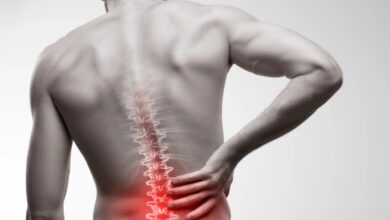Advanced Dentistry and Aggressive Tooth Decay: How Both Are Sequels of the Modern Age

Ever since the First Industrial Revolution started in the 1800s, life has never been the same. Some generations have been fortunate enough to witness the unrecognizable changes brought about by advanced technologies.
Such changes pervade the fabric of our existence, including healthcare. Speaking specifically of dentistry, the global dental equipment market amounted to a whopping $11.2 billion in 2023. It continues to grow at a CAGR of 6.3% till 2030.
These tools include syringes, scalers, burnishers, drills, excavators, and more. Now with the advent of fourth-gen technologies like Artificial Intelligence (AI) and Machine Learning (ML), the industry is advancing further. Tooth decay, a common area of concern, is especially being tackled head-on.
What’s ironic still is the fact that this issue may further be contributed by modern discoveries. In this article, we will closely discuss how technological boon and disease bane are both the sequels of this modern era.
Technologies Shaping the Future of Dentistry to Tackle Tooth Decay
Let’s get a close glimpse of what the future of dentistry may look like due to modern technological advancements.
AI-Guided 3D Simulations
The Harvard School of Dental Medicine states that AI has leaped right from climate change to oral health. The imaging tools that dentists use are AI-powered to detect and flag any abnormalities in the teeth.
Even at the time of treatment, AI-guided 3D simulations help orthodontists fit the aligners or retainers accurately. Some AI equipment goes as far as showing clearly the areas where decay has been detected.
Even the extent of decay is shown so that dentists can understand what procedure to perform. This also helps patients to take the necessary steps towards better oral hygiene.
Laser Dentistry
Another area that has advanced profoundly is laser dentistry. It will become a huge part of this field’s future. Dentists use laser beams for precision targeting of decaying portions of a tooth. Then, those parts will be removed in a manner that healthy tooth structure remains unaffected.
Since the procedure can be done much more quickly than traditional filling methods, the patient need not endure multiple tedious appointments. Healthline reveals that lasers end up killing the bacteria responsible for a tooth’s decay, thereby preserving its long-term health.
New Contributors to Tooth Decay
When we mention the word ‘new,’ we don’t essentially mean something that may be unfamiliar to contemporary folks. It simply means that ancient civilizations had no such threats of tooth decay as we have today. In that sense, let’s look at the three major contributors to tooth decay in the Modern Age.
The Modern Diet
This must be the first pointer since it’s a major one. A society’s diet is pervasive, having a significant impact on bodily functions and health. Unfortunately, the modern diet is not conducive to good health by any means.
The US News & World Report discusses some of the best diets worldwide in 2023. These include the Mediterranean diet and the Flexitarian diet. The only problem is that the Standard American Diet (SAD) is nowhere to be found on that list.
Let’s review what the SAD includes. All food items that are highly processed, grain-based, sugary, and fried come under an average American’s dietary pattern. This means you can find cans of soda pop, red meat, double-fried French fries, burgers, and whatnot in a standard American household. These items are most likely to be selected from a restaurant’s menu too.
It is no wonder that people are sicker than ever, and are developing issues like tooth decay prematurely. Such food items did not exist in the bygone periods, at least not in the ultra-processed form of today. Sugar derived from beet was first produced in the late 19th century.
Today, it is the food item that nobody needs but everybody craves. It is highly addictive, even more so than cocaine. So, it’s not always chocolate that we crave, but chocolate laden with sugar.
Medications
Have medicines existed for centuries? Yes, but those in times past cannot be compared to those used today. Modern medicine largely utilizes synthetic chemicals for formulation. This means the outcome is ambiguous and things can quickly move south.
It is something that happened with a widely used drug called Suboxone. It had been approved by the Food and Drug Administration (FDA) in 2002 for opioid use disorder. Also known as Buprenorphine, Suboxone lowers the potential for misuse by diminishing the effects of opioids.
The Substance Abuse and Mental Health Services Administration (SAMHSA) states that buprenorphine is safe and effective when taken as prescribed. It is undoubtedly effective but of its safety, concerns are being raised. TorHoerman Law states that patients have suffered severe dental injuries due to Suboxone.
These injuries include tooth decay, infections, pain, and more. It has been found that one of the active ingredients in the medication is responsible for corroding the enamel. Victims have filed the Suboxone tooth decay lawsuit where the average settlement may vary between $50,000 and $150,000.
If we go by the National Institutes of Health’s latest publication, Suboxone is still available across the US. Its success largely depends on patient education. Pharmacists must also collaborate to provide only the prescribed dosage. Any signs of buprenorphine toxicity must be addressed immediately.
A Novel Bacteria Species
This is another curse of the modern era from the standpoint of tooth decay. Are we suggesting that the bacteria formed out of thin air just recently? No, but its lingering effects have been hidden until now.
Time and again archeologists have found that ancient teeth seldom have any cavities caused due to bacteria commonly found today. The new bacteria species has been termed Selenomonas sputigena can produce tooth enamel-damaging acid. It coats the tooth in a biofilm of this acid, thereby corroding the enamel.
From samples taken of children with cavities, around 16 species of bacteria were found. Out of these, Selenomonas sputigena produced the highest levels of harmful acid. The reason why it can do so is because it acts as a ‘contributor to a contributor.’ In other words, this species helps the others to cause tooth decay.
In closing, let’s ponder upon the unusual situation that modern society finds itself in. It almost seems as if new problems are generated so that respective solutions can be discovered in the name of heroism. Perhaps we cannot give the makers credit for creating a new bacteria, but the others should raise eyebrows.
In time, there is no doubt that tech advancements will tackle tooth decay issues like never before. Even then, the thought-provoking question is whether such solutions would be needed had the problems never been developed.
After all, there was a time when almost every modern malady, including cavities and tooth infections, was unheard of. A better debate would be regarding what we’re doing wrong.





